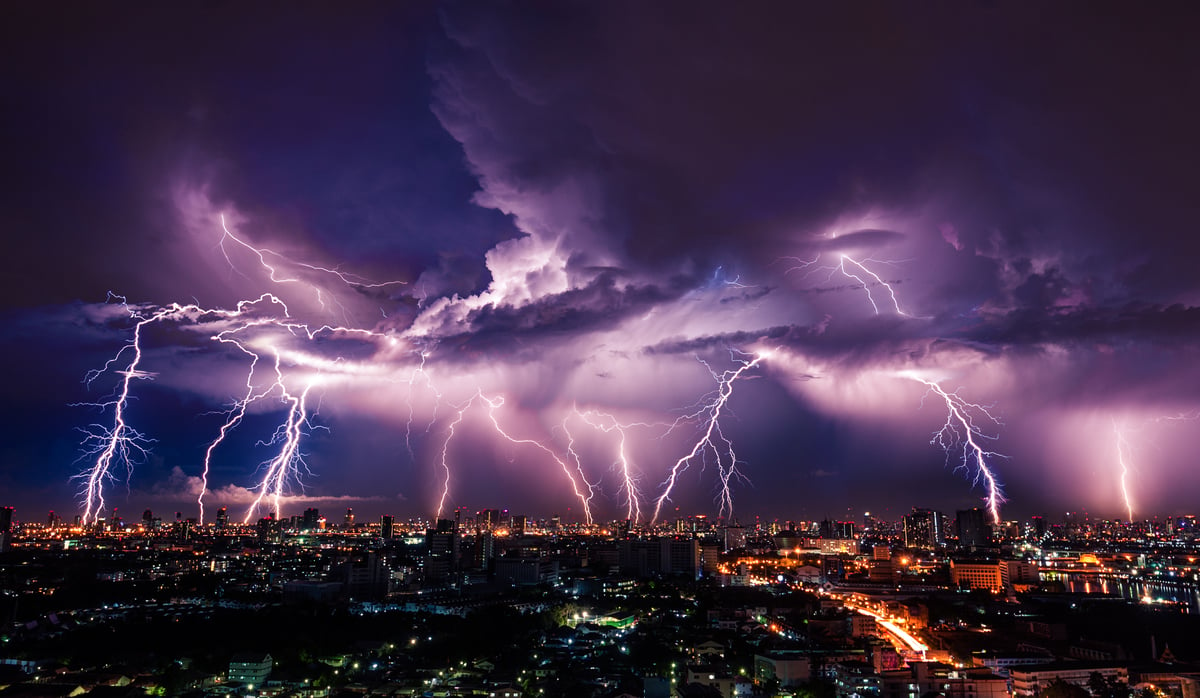
Ever wondered about the mysteries lurking in the depths of the ocean? Well, buckle up, because we're diving into the heart of one of the most mesmerizing wonders of the natural world: the Great Blue Hole. This massive underwater sinkhole off the coast of Belize is a magnet for divers and scientists alike, all drawn to its deep blue mysteries. What makes the Great Blue Hole so fascinating? From its formation to the unique marine life calling it home, this natural wonder is a storybook of Earth's history, waiting to be read. With each descent, divers uncover more secrets hidden within its dark waters, making it a never-ending source of intrigue. Let's plunge into the 22 most amazing facts about the Great Blue Hole, guaranteed to leave you in awe of nature's capabilities.
Key Takeaways:
- The Great Blue Hole is a massive underwater sinkhole in Belize, home to diverse marine life and ancient geological wonders. It's a vital site for conservation and scientific research, offering a window into Earth's history.
- This natural wonder fascinates us with its size, depth, and mysterious underwater world. It symbolizes the endless possibilities of exploration and reminds us of the importance of protecting our oceanic ecosystems.
What is the Great Blue Hole?
Located in the Belize Barrier Reef Reserve System, the Great Blue Hole is a giant marine sinkhole. Lighthouse Reef, a small atoll 70 km from the mainland and Belize City, houses this natural wonder. Divers and snorkelers are drawn to its crystal-clear waters and abundant marine life, making it a popular destination for underwater exploration.
-
The Great Blue Hole measures about 318 meters (1,043 feet) across and 124 meters (407 feet) deep, making it one of the largest sinkholes of its kind.
-
This underwater sinkhole was formed during several episodes of quaternary glaciation when sea levels were much lower.
Historical Significance
The Great Blue Hole has not only captivated divers but also scientists and historians due to its unique geological features and historical significance.
-
Jacques Cousteau, the famous French explorer, declared it one of the top five scuba diving sites in the world in 1971.
-
Evidence suggests that the Mayans may have known about and utilized the Great Blue Hole, as ancient artifacts have been found in some of its deeper caverns.
Marine Life in the Great Blue Hole
Diving into the Great Blue Hole, explorers find themselves surrounded by a diverse array of marine life, thriving among the stalactites and limestone formations.
-
Sharks, especially bull sharks and Caribbean reef sharks, are common inhabitants of the Great Blue Hole.
-
Other marine species include giant groupers, neon gobies, and a variety of angelfish, all adding to the vibrant underwater ecosystem.
Geological Wonders
The structure of the Great Blue Hole reveals a lot about Earth's geological history.
-
Stalactites found in the Great Blue Hole suggest that it was once a dry cave system during the last Ice Age.
-
Sediment layers within the hole provide valuable insights into Earth's climatic changes over thousands of years.
Conservation Efforts
Recognizing its ecological and historical value, efforts have been made to preserve the Great Blue Hole and its surroundings.
-
In 1996, the Belize Barrier Reef Reserve System, including the Great Blue Hole, was designated a UNESCO World Heritage Site.
-
Ongoing conservation projects aim to protect the area from overfishing and pollution, ensuring its beauty and biodiversity for future generations.
The Great Blue Hole as a Research Site
Scientists and researchers are drawn to the Great Blue Hole for its potential to offer insights into past climatic events and marine biodiversity.
-
Advanced technology, like submersibles and ROVs (Remotely Operated Vehicles), has been employed to map the Great Blue Hole's interior, revealing its hidden features.
-
Studies conducted in the Great Blue Hole help scientists understand the impact of climate change on marine ecosystems.
The Great Blue Hole in Popular Culture
The mystery and allure of the Great Blue Hole have made it a subject of fascination in popular culture.
-
Documentaries and TV specials, including those by the Discovery Channel, have featured the Great Blue Hole, bringing its wonders to a global audience.
-
It has also inspired various myths and legends, including tales of ancient monsters dwelling in its depths.
Challenges and Threats
Despite its protected status, the Great Blue Hole and the surrounding reef face several environmental threats.
-
Climate change poses a significant risk, with rising temperatures and acidification affecting the coral and marine life.
-
Illegal fishing and pollution from tourism also threaten the delicate balance of this unique ecosystem.
-
Efforts to combat these threats include stricter regulations on fishing and tourism, as well as global initiatives to address climate change.
Why the Great Blue Hole Fascinates Us
The Great Blue Hole remains one of the most intriguing natural wonders on our planet.
-
Its sheer size and depth, combined with the mystery of its underwater caverns, continue to attract adventurers and scientists alike.
-
The opportunity to explore a prehistoric world, preserved underwater for thousands of years, offers a unique window into Earth's past.
-
For many, the Great Blue Hole symbolizes the endless possibilities of discovery and exploration that still exist in our world.
-
Its significance goes beyond just a diving destination; it represents a critical part of our planet's natural history and a vital area for conservation.
-
Ultimately, the Great Blue Hole reminds us of the beauty and fragility of our oceanic worlds, urging us to protect these precious ecosystems for generations to come.
A Dive into the Depths: Final Insights
Diving into the Great Blue Hole is like stepping into another world, where nature's mysteries unfold in the deep blue. This natural wonder isn't just a dive spot; it's a portal to Earth's past, offering glimpses of ancient geological formations and a unique ecosystem. With its stalactites, sinkhole structure, and diverse marine life, the Great Blue Hole continues to fascinate scientists and adventurers alike. Whether you're a seasoned diver or an armchair explorer, the allure of exploring its depths is undeniable. Remember, preserving this underwater marvel is crucial for future generations to enjoy and learn from. So, as we surface from this deep dive into the Great Blue Hole's wonders, let's carry with us not just awe and memories, but also a commitment to protecting our planet's natural wonders.
Frequently Asked Questions
Was this page helpful?
Our commitment to delivering trustworthy and engaging content is at the heart of what we do. Each fact on our site is contributed by real users like you, bringing a wealth of diverse insights and information. To ensure the highest standards of accuracy and reliability, our dedicated editors meticulously review each submission. This process guarantees that the facts we share are not only fascinating but also credible. Trust in our commitment to quality and authenticity as you explore and learn with us.


